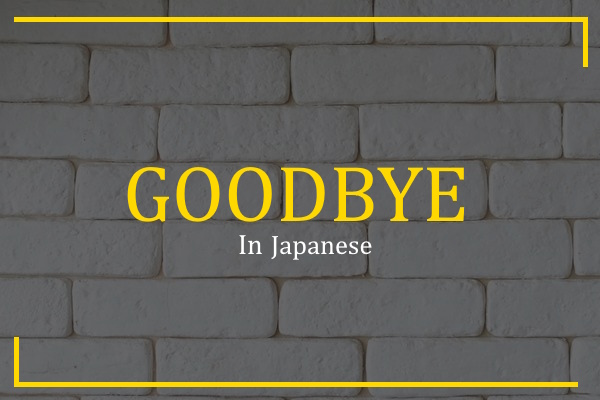Almost the same way you learn how to say hello when learning a new language, you also learn how to say goodbye once you reach the stage. Also, you may want to take a look at another article we have written about how to say hello, if you haven’t already.
Goodbye in Japanese: さようなら (Sayōnara)
“Bye” is the most common way in which we bidding farewell in English – along with “see you”, “catch you later” and “catch you later”. Does it seem so strange to say that it’s the same in Japanese? A lot of ways exist to say bye. Some are more general, and others are used more specifically. You should use some with familiar people, and others in a formal setting.
If you search Google, you will find a lot of information on how to say goodbye in different languages. For translation of this word in Japanese language, our first Japanese word is sayonara, which we learn when we are learning the language. The word means goodbye directly in Japanese. The one difference is that you can use “goodbye” in a casual setting without it carrying too much significance. If you say “sayonara” to someone, you’re telling them that you do not expect to see them again anytime soon.
The way you say goodbye in anime and J-drama is by using “jaa ne”. When parting ways with a friend, this is like saying “see you” to them.
refers to the previous phrase, except with more emphasis. The phrase “Mata ne” contains the word “mata”, meaning “again”, and it can as “see you again”. Friends are most likely to use the phrase “Mata ne” casually.
In “Mata Ashita”, the word “mata” is paired with “ashita” (tomorrow), which refers to “tomorrow”. The situation here is similar to the previous one, except that you use it if you are meeting them the next day instead of the previous one. You can substitute another word for “tomorrow” – for example, if you want to say “see you next week”, just say “mata raishuu”.
In addition to “mata,” another word you can use for bye is “kondo”. This phrase can be interpreted as saying “see you next time” using the word “kondo”. Unlike the other two, you use this when you haven’t really decided when to meet next, but are just implying that you might want to.
Mata aou, which means “let us meet again,” is an informal way to say goodbye, implying that there will be a meeting. To say this politely, use “mata aimashou”.
The next phrase, after the “mata” bye phrase, is “kyou arigatou” (today’s). It combines the words kyou (today) and arigatou (thank you) to mean “today”. As a whole, the word means “thanks for today”. In English, it means a similar thing.
At the end of the workday, after club practice at school or when you’re finishing up at work with your coworkers, you’ll hear this quite a bit. Informally, you can also use “otsukaresama deshita”, or even drop the “sama” part and just write “otsukare”.

Arslan Hussain, founder of The Different Languages, is an experienced translator passionate about languages and cultures. Through his website, he shares his knowledge and love for different languages, making learning accessible and enjoyable.

